×
The Gerbeaud BuildingWelcome to the Gerbeaud Confectionery, the spectacle of Vörösmarty Square in Budapest since the 19th century. As one can see nowadays, the four-storey building, built in the Secession and late-eclectic style with cortili, bears the fame of its former owner, Emil Gerbeaud (1854-1919), who arrived in Hungary in 1884 to take over Henrik Kugler's (1830-1905) confectionery.
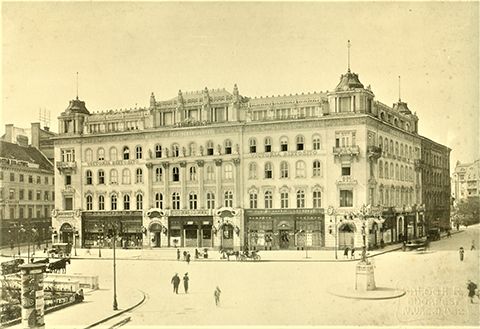
Gerbeaud toiled at expanding and improving his enterprise in the rest of his life. The confectionery and its workshop were not the only ones situated in the building complex of the Gerbeaud Building: the first floor provided home for the Gerbeauds and place for the central office of the company; the second floor had a packing-room; the third floor had an apprentice workshop; and the workers' flats could be found on the fourth floor. Once one could encounter several Gerbeaud shops, factories, corporate real estates, and advertisements nationwide; today this is the only building left from the 'Sweet Empire' of the famous confectioner, which he established with his family by decades-long toil. Come along and get acquainted with the story of one of the most famous confectioner of Hungary!
×
WHO'S THIS WALNUT CAKE?
Welcome to "Sweet Empire+
Under Cherry Liqueur Chocolate  icon various videos, games, curiosities can be found. Take a look around!
icon various videos, games, curiosities can be found. Take a look around!
Introduction video:
ARE YOU A TEACHER AND WOULD LIKE TO USE THE MATERIAL?
The combination of videos and playful tasks were developed for hospitality/touristic vocational education, however our content also belong to adult life or enterprise point of view. Therefore if you're educating and see an opportunity in it, only your imagination restricts the possibilities of using the materials.
All-around teacher's aid to the games on this site, can be found here:
MAP


×
×
Gerbeaud Royal PavilonThe Gerbeaud Royal Pavilon offered seasonal opening hours (from spring to autumn) for guests in the City Park. Its fashionable terraced courtyard, decorated with plants and provided with sunshades, served as relaxing place both for the female and male visitors of the City Park, as well as for children. They could nibble away at some Gerbeaud dessert, ice cream, chocolate; they could also drink liqueur, coffee, tea, and refreshments. Guests could listen to music in the evenings, too. The pavilion, besides its everyday function, offered place for various programmes. Vast celebrations were held there: banquets, concerts, club meetings, society gatherings, charity events, and receiving visitors from abroad. The Royal Pavilon functioned from 1896 to 1945. It was hit by bombs in the Second World War, later on it was no longer renovated.
 The Gerbeaud Royal Pavilon at the 1896 Millennium Exhibition
The Gerbeaud Royal Pavilon at the 1896 Millennium Exhibition Wealthy company at the Gerbeaud Royal Pavilon at the City Park (ca. 1910)
Wealthy company at the Gerbeaud Royal Pavilon at the City Park (ca. 1910)

×
Gerbeaud at Grand Hotel RoyalEmil Gerbeaud was one of the investors of Grand Hotel Royal share company. On the ground floor of the impressive hotel at Erzsébet Boulevard, a Gerbeaud branch shop was run, whose regular customers consisted of guests, the residents nearby and passers-by of the major boulevard.
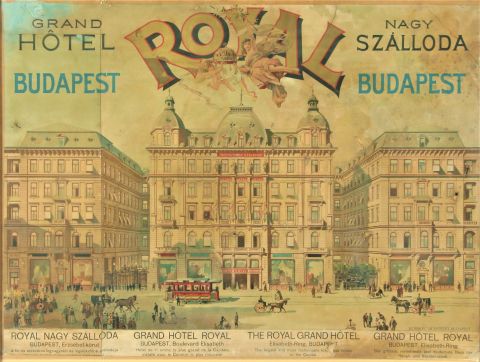 Advertising poster depicting Grand Hotel Royal. One could purchase Gerbeaud products in
one of the shops on the ground floor at the hotel.
Advertising poster depicting Grand Hotel Royal. One could purchase Gerbeaud products in
one of the shops on the ground floor at the hotel.

×
Chocolate factory at Duna StreetEmil Gerbeaud founded a minor chocolate factory at Gizella Square as early as 1886, too. He presented the process of chocolate production with operable modern machines to the general public at the 1896 Millennium Exhibition. Nevertheless, the needy framework of the building at Gizella Square could not satisfy the increasing needs of production; therefore, he relocated the chocolate factory to his corporate real estate at Duna Street in 1904, which he significantly expanded and modernised.
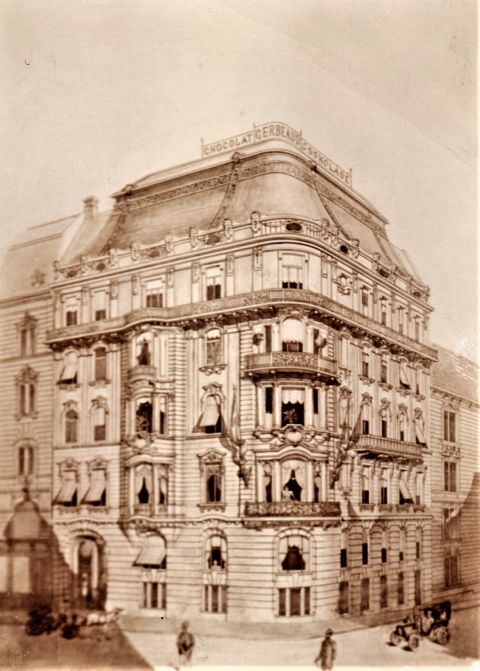 The Gerbeaud Chocolate Factory at Duna Street (the 1900s) / Károly Szerencsi’s
bequest
The Gerbeaud Chocolate Factory at Duna Street (the 1900s) / Károly Szerencsi’s
bequest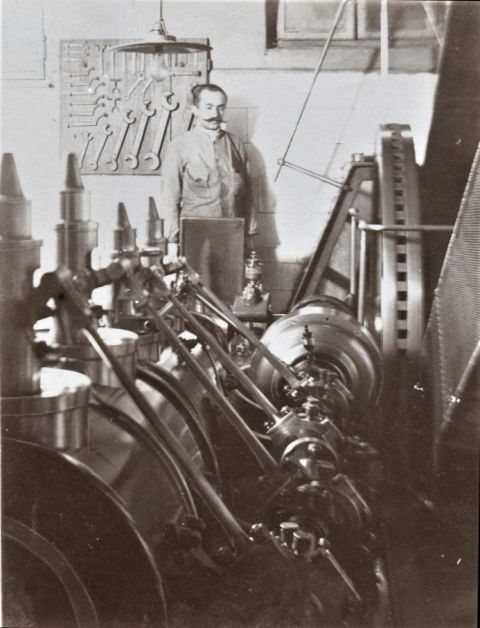 Factory worker in the engine house of the Gerbeaud Chocolate Factory (ca. 1910) / Károly
Szerencsi’s bequest /
Factory worker in the engine house of the Gerbeaud Chocolate Factory (ca. 1910) / Károly
Szerencsi’s bequest /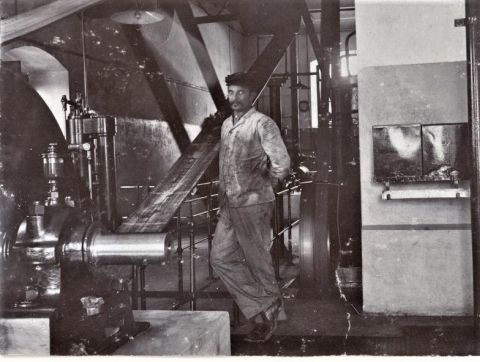 Factory worker in the engine house of the Gerbeaud Chocolate Factory (ca. 1910) / Károly
Szerencsi’s bequest /
Factory worker in the engine house of the Gerbeaud Chocolate Factory (ca. 1910) / Károly
Szerencsi’s bequest /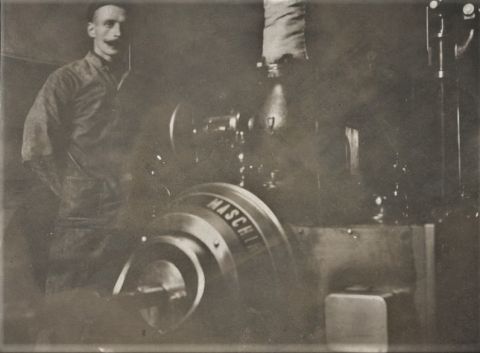 Factory worker in the engine house of the Gerbeaud Chocolate Factory (ca. 1910) / Károly
Szerencsi’s bequest /
Factory worker in the engine house of the Gerbeaud Chocolate Factory (ca. 1910) / Károly
Szerencsi’s bequest /

×
14 Mozsár StreetThe building was purchased by Emil Gerbeaud in 1903. The two-storey building in closed row and with cortili was reconstructed. The building functioned as the economic building of the company. There were repositories and garages on the ground floor; while, official residences were created for the co-workers of the company upstairs. This company seat served as a stand for the vehicles of the Gerbeaud company; this is the reason why the street happened to resound with the noise of the drivers of the company. Further flats were at the disposal of Gerbeaud employees at 13 Deák Ferenc Street and 2 Régiposta utca, too. These buildings, however, do not exist anymore.
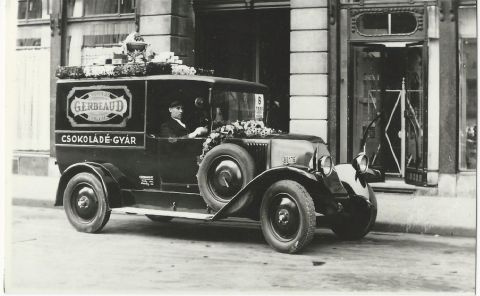 The decorated delivery van of the Gerbeaud chocolate factory in the interwar
period
The decorated delivery van of the Gerbeaud chocolate factory in the interwar
period

×
7 Gizella SquareHenrik Kugler opened his confectionery at Gizella Square in 1870, which Emil Gerbeaud took over from Kugler by the 1890s gradually. This building became the centre of the Gerbeaud company, which also functioned as a confectionery workshop, the flat of the Gerbeauds, accommodation for workers, and a central office. By that time, the installation of electric lighting and telephone was already realised in the building. The well-situated head office obtained increase in its popularity due to the fact that the final stop of the underground was founded at Gizella Square in 1896. Among several other famous people, Ferenc Deák and Franz Liszt, in the Kugler era, and then Queen Elisabeth and Archduchess Auguste, in the Gerbeaud era, visited the confectionery.
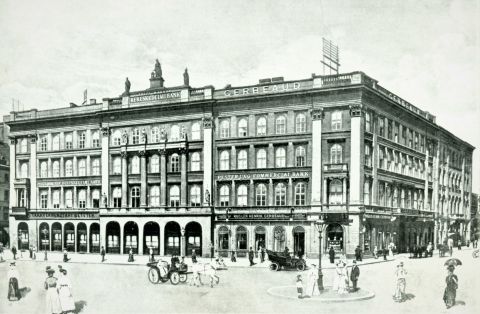 Dynamic public life in front of the Gerbeaud Confectionery at Gizella Square (ca.
1890/1900)
Dynamic public life in front of the Gerbeaud Confectionery at Gizella Square (ca.
1890/1900)

×
20 Kossuth Lajos Street and 29 Andrássy AvenueApart from the shop in Gizella Square and those of Grand Hotel Royal and the City Park, Gerbeaud confectioneries were run in the palace building of the National Casino at 20 Kossuth Lajos Street, as well as at 29 Andrássy Avenue. There is no trace left of the former today; however, the latter is still run as Művész Kávéház today.
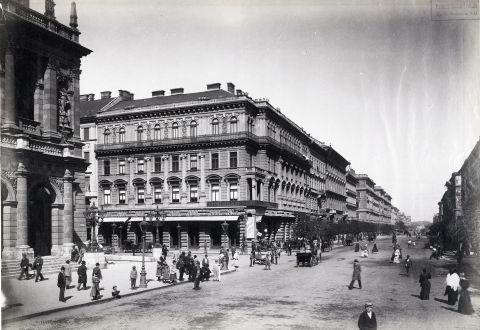 Andrássy Avenue, where the former Gerbeaud branch shop was run (1900), photograph by
György Klösz / Source: Fortepan/Budapest City Archives. Archival reference:
HU.BFL.XV.19.d.1.07.178/
Andrássy Avenue, where the former Gerbeaud branch shop was run (1900), photograph by
György Klösz / Source: Fortepan/Budapest City Archives. Archival reference:
HU.BFL.XV.19.d.1.07.178/
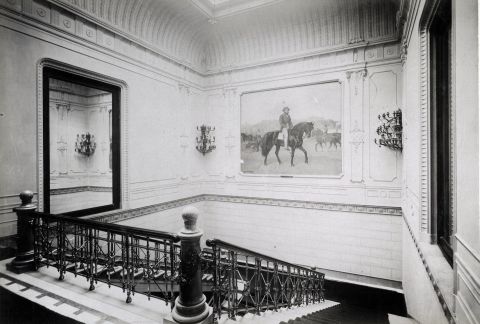 Stairhall of the National Casino at the corner of Kossuth Lajos Street and Szép Street,
photograph by György Klösz. There was a Gerbeaud branch shop in this building, too.
(1895-1899) / Source: Fortepan/ Budapest City Archives. Archival reference:
HU.BFL.XV.19.d.1.11.006
Stairhall of the National Casino at the corner of Kossuth Lajos Street and Szép Street,
photograph by György Klösz. There was a Gerbeaud branch shop in this building, too.
(1895-1899) / Source: Fortepan/ Budapest City Archives. Archival reference:
HU.BFL.XV.19.d.1.11.006

×
/
- 1.5
- 1.25
- Normal
- 0.5
×
×
Imperial and Royal Court Confectionery heraldry reliefFor a long time, at the corner of the Gerbeaud confectionery, there hung the sign 'Imperial and Royal Court Confectionery', which meant recognition and status during the period of the Dual Monarchy. The title imperial and royal court could be obtained only by those of the excellent experts and companies who had unexceptionable morals and sound financial background, deserving the recognition of the court by their products. The title imperial and royal court was deserved by Henrik Kugler and Emil Gerbeaud, too
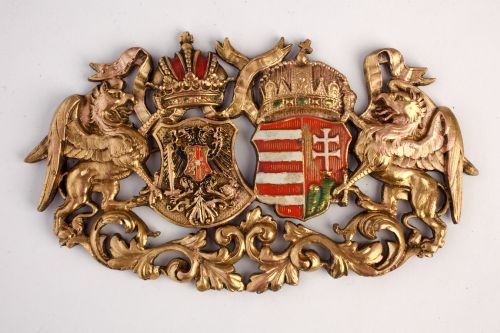 The sign imperial and royal court
The sign imperial and royal court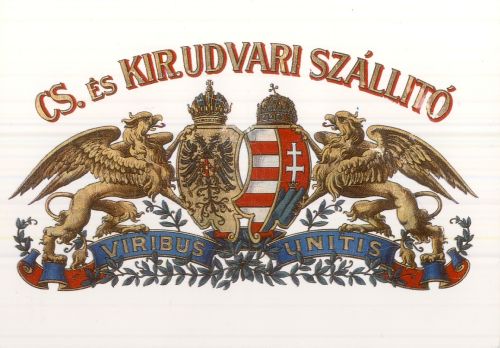 The sign Imperial and Royal Court Supplier on postcard with the device 'Viribus Unitis' (With
United Forces)
The sign Imperial and Royal Court Supplier on postcard with the device 'Viribus Unitis' (With
United Forces)
×
Red GerbeaudThe First World War meddled with the pre-war world order. The industry of Hungary ended in a difficult situation. The Gerbeaud company experienced the need of goods and raw material, and the problems relating to the employment of the employees (e.g., inflation, the increase of wage claim, labour shortage). The successor of Henrik Kugler, the Gerbeaud share company was under the necessity of introducing reduction, the function of the company was restricted. Finally, the Gerbeauds and the company survived the troublesome war years; though, the consequences caused heavy losses.
The disunion of Croatia, Rijeka and Hungary resulted in the liquidation of the manufacturing plant of Rijeka. In 1919, the industrial units of Pest and Rijeka were merged in a plant at Dohány Street. The violent actions executed by the 1919 turbulence and Commune caused losses in Emil Gerbeaud’s shops and industrial units, which were ’socialised’, by then-contemporary terms. A red label appeared on the display window of the shop with the following labelling: ’Proletarian property! Under proletarian protection’. Gerbeaud lost everything he achieved during his 35 years of work within a couple of days. Similarly to other owners, he was allowed to attend the shop to run its business, yet not as his own anymore, but as a state property. However, after the Hungarian Soviet Republic, the Gerbeauds received their confiscated possessions back, yet Emil Gerbeaud fell severely ill by that time.
Watch the then-contemporary newsreel between 3:07 and 3:55!
Filmhíradók - 100 éve ezen a héten 23. (2019. április 1-7.)









